Jason Pym's Blog, page 9
November 23, 2013
How to play Sichuan-style mahjong
Sichuan-style mahjong is popular in throughout southern China. It is the simplest version of mahjong*, so a good place to start for beginners.
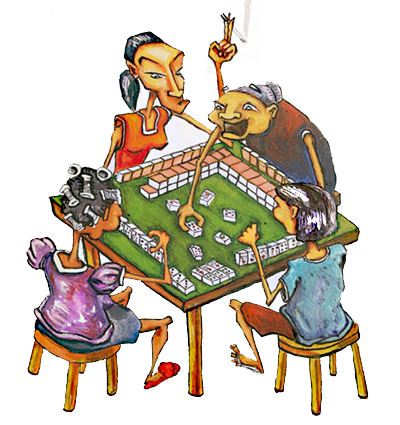
Mahjong is like the card game rummy – you’re trying to make runs or three-of-a-kind. Here are the rules in detail:
THE TILES**
Mahjong uses three suits, each numbered one to nine:
Circles 筒子 tǒng zi

Characters 万子 wàn zi

Bamboo 条子 tiáo zi

Each suit has four of each tile:

(four five of characters)
THE AIM OF THE GAME
During the game each player has a hand of 13 tiles.
On their turn, each player picks up a tile and chooses one tile to discard, with the aim of making a pair and four sets of three tiles (your winning tile brings your hand up to 14 tiles).
The set of three tiles can be either a run (3,4,5, or 6,7,8 etc) or three-of-a-kind.
A winning hand:
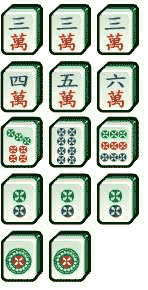
Note you can ONLY have two suits in your hand at the end of the game – there’s a penalty if you still have three.
HOW TO PLAY
1. Building the wall
First build the wall as shown, with each of the four players building their side:
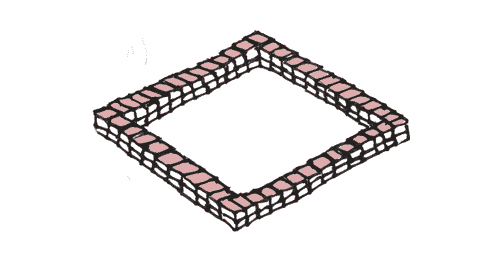
2. Breaking the wall
Next each player rolls two dice, the player with the highest roll is known as the “East,” (东 dōng, also known as the dealer 庄家 zhuāng jia) (( In other versions of mahjong each player is a directional wind, and it plays a much greater role in the actual game )) .
The East player rolls the dice again. The total of the two dice decides which wall to break, as counted clockwise starting with themselves. So, a roll of three would be opposite the first player (one for the player’s position, two is the person on their left, three is the person opposite).
Then the lowest number of the two dice decides where exactly to break the wall, counting in from the nearest (clockwise) end of the wall (that is, for whichever player is sitting at that side of the wall, it would be on their right hand).
This might sound a bit tricky, but to give an example:
A roll of a one and a four. With a total of five the East player is to break their own wall, and the lowest roll was one, so they start one tile in from their right.
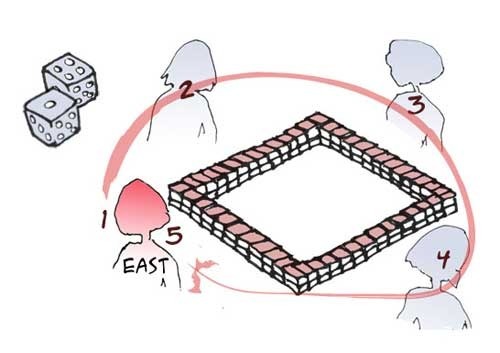
After the first game, whoever won the last game is now East and gets to break the wall.
3. Taking your tiles
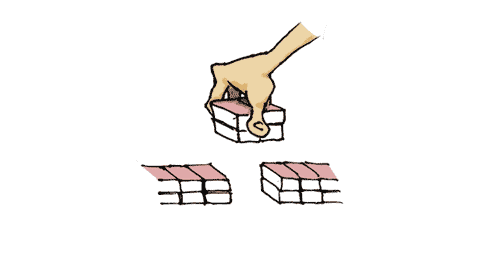
The East player is the first to take their tiles, and they take a stack of four. Going anti-clockwise round the table, each player takes four tiles until everyone has 12 tiles in their hand.
Then the East player takes two tiles off the end of the wall, like this:
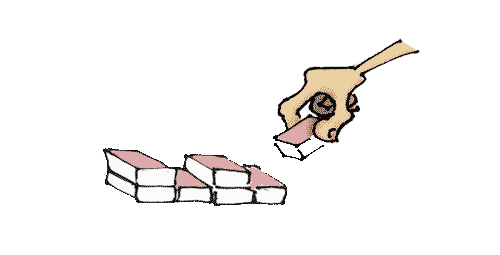
(The East player gets one tile extra because they have to discard one tile to start the game).
The remaining three players take one tile each in sequence.
Now that each player has a hand of 13 tiles you can begin the game.
4. Playing the game
For the first turn in the game, the East player discards one tile.
After this, standard play begins. Each player picks up one tile, and chooses a tile to discard (the discarded tile can be the one they have just taken). Play continues anti-clockwise, with the player on the right taking the next turn.
Usually, players pick up a tile from the remaining wall.
However, instead of picking up a tile from the wall, there are two alternative moves that can be made: peng and kong.
The Peng 碰 pèng (( Unlike other versions of mahjong there is no chow (“eat”) move, where you take the discard tile from the player on the left to make up a run. ))
When you have two of a kind in your hand, and ANY of the other three players discards a matching tile, you can shout PENG! And grab that tile, placing the three of a kind face up on the table.

Then discard one tile. Play continues from the player to the right.
The Kong 杠 gàng
When a player has three-of-a-kind in their hand and ANY of the other three players discards a matching tile, you can shout KONG! And grab that tile, placing the four-of-a-kind face up on the table.

If you have three-of-a-kind in your hand and draw a matching tile from the wall, you still shout KONG! If the three-of-a-kind was face up on the table you add it (known as an exposed kong***).
Regardless of whether the player got the kong from a discarded tile or from the wall, they still have to draw another tile – otherwise you’d be one short, and couldn’t complete your hand.****
Then discard one tile. Play continues from the player to the right.
5. Winning
When a player picks up their final tile completing a winning hand, they shout HU LE! ( 和了 hú le) and put that tile face up next to their concealed tiles. Some of the sets will still be concealed because they were made by tiles drawn from the wall – these concealed sets are not revealed until everyone has gone out. Sichuan mahjong is often played as a “Battle to the Bloody End,” ( 血战到底 xuè zhàn dào dǐ ) so when one player goes out the three remaining carry on. Then when the next player goes out the two remaining fight it out.
6. Scoring
Methods of scoring are different everywhere, but as an example here is how scoring works in Yunnan province:
If the winning tile is drawn from the wall ( 自摸 zì mō) all the players who have not yet gone out have to give the winner money.
If the winning tile is taken from a discard, the player who discarded that tile is the only one that has to pay the winner.
Standard hand, including runs: 1 point
Standard hand, three-of-a-kind and a pair only – no runs (called 大对子 dà duì zi): 2 points
Special hand, all one suit ( 清一色 qīng yī sè ): 4 points
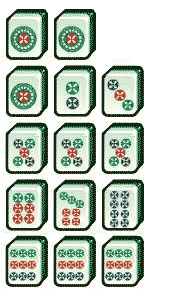
Special hand, all pairs ( 小七对 xiǎo qī duì ): 4 points
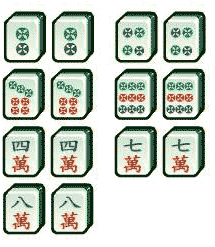
For every kong in your hand: double your points
So it would be possible to have a winning hand of all pairs (4 points) that was all one suit (4 points) including a kong (double the points) for a total of 16 points.
And how much is a point worth? It could be could be two mao or it could be 20 yuan depending on who you’re playing with.
Other useful words:
suit 门 mén
to discard 打掉 dǎ diào
to build the wall 理牌 lǐ pái
* Of the many different variations of mahjong, the Sichuan version has stripped down the rules to a minimum and no special tiles are used – no flowers, seasons, winds or dragons. Why take out all the fun pieces? One reason is that this makes it far harder to cheat, and therefore better for gambling. With the special tiles it is easy for two players to agree on a special code: If my first discard is a season, the second a dragon, that means I want circle tiles.
** The mahjong tile images are from Wikipedia Creative Commons, drawn by Jerry Crimson Mann.
*** exposed kong 明杠 míng gàng )) ), if the three-of-a-kind was still concealed the player puts the four-of-a-kind face down on the table and turns them over on their NEXT turn (a concealed kong (( concealed kong 暗杠 àn gàng
**** This is known as 小相公 xiǎo xiàng gong. Having too many tiles in your hand is 大相公 dà xiàng gong… 相公 is a common term in operas and novels for a young gentleman, or the way a wife addresses her husband – the modern equivalent would be 老公 lǎo gōng , the etymology is unclear – big husband / small husband?
November 11, 2013
New jam labels: Marmalade, Quince and Red Plum
New labels for CC’s jam (plus dragons), with Marmalade:
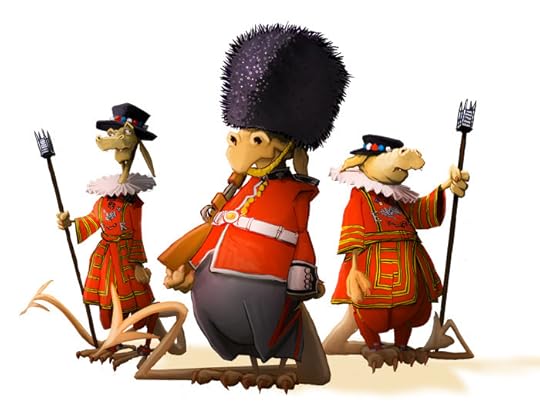

Red Plum: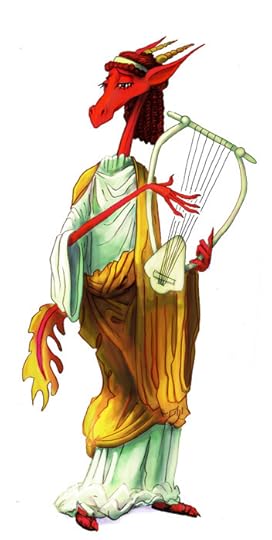

and Quince: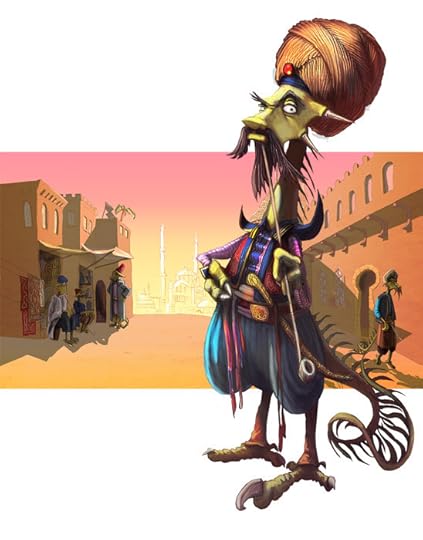
September 7, 2013
China Central Television interview
I was interviewed by CCTV about the Dali Map painting, it was originally for local (Dali) tv in Chinese, so they dubbed over in (slightly odd) English…
September 3, 2013
Dali map – colour
Finally finished!! Just waiting to be framed now…
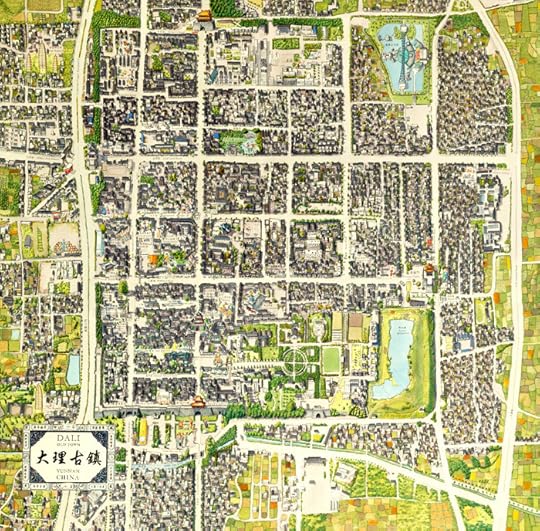
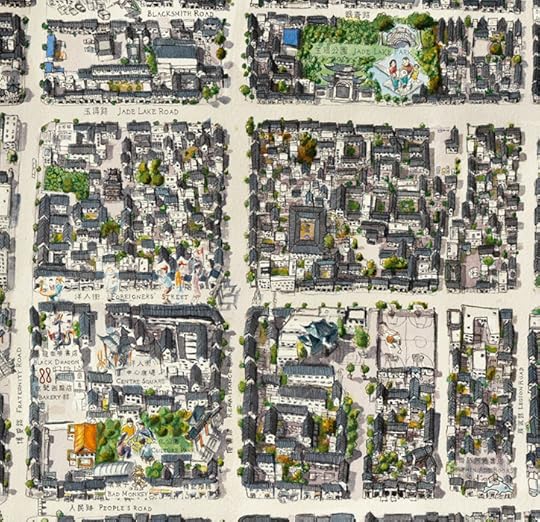
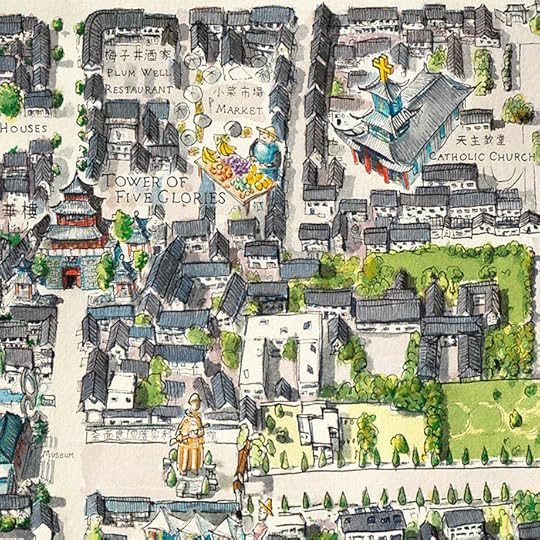
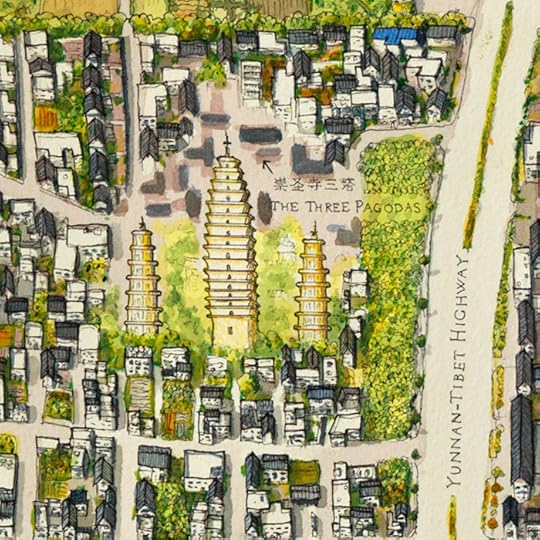
God of Wealth Festival [watercolour]
This is a Han Chinese festival popular with the Bai people in Dali, you burn paper money, prayers and incense, and make offerings of food (espcially chickens, always chickens) in ordered to be blessed with good fortune.



July 9, 2013
Dali map – black and white
Finally finished inking in the map of Dali old town, now I just need to colour it in…



July 2, 2013
SOZO lizards
Our friends run a cafe in Ho Chi Minh City called the SOZO Centre, and I’ve drawn a few lizards for their new menu…
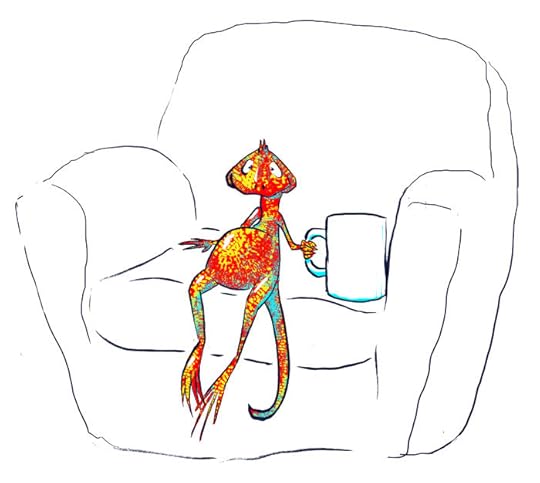
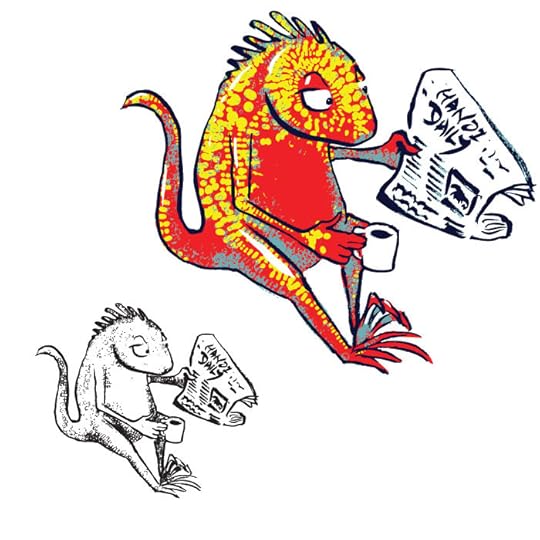
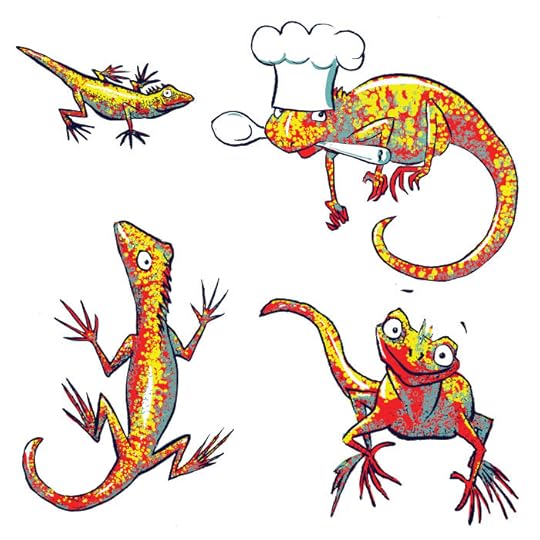
Dragons and photos
These are the images used on the Taobao (Chinese ebay site) for the jams…
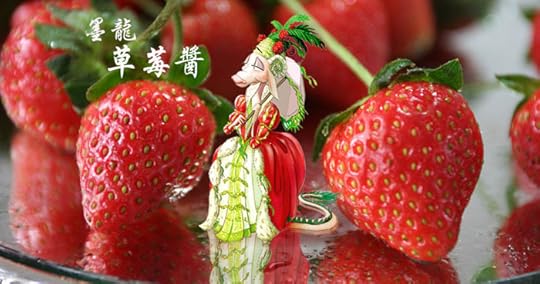
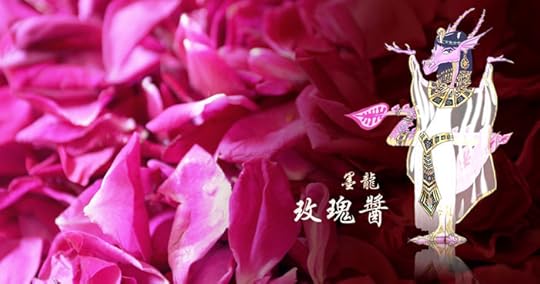
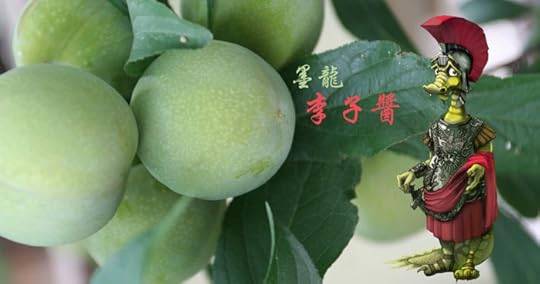
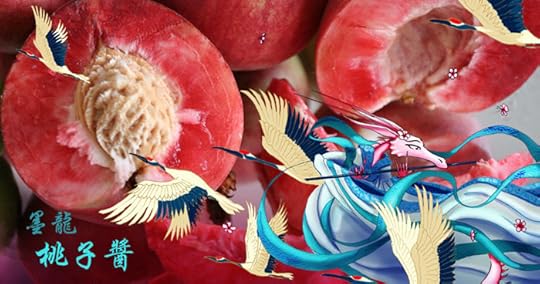
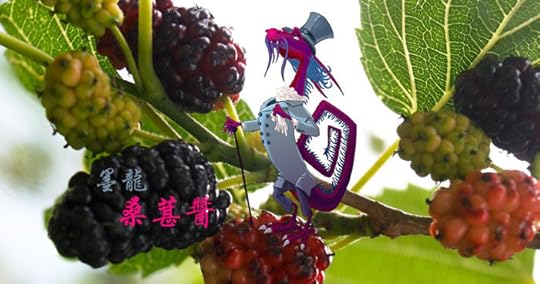
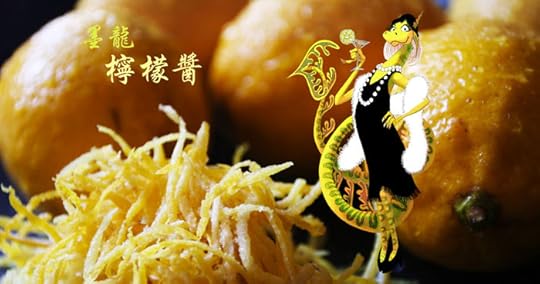
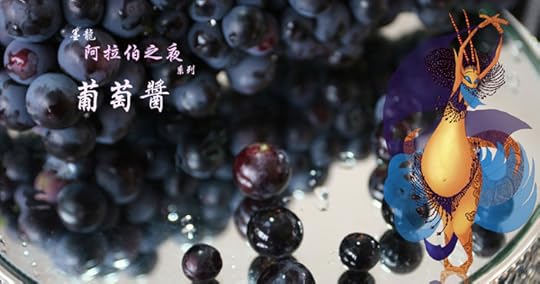
June 29, 2013
Jam labels: Peach, Plum and Red Hot Relish…
Peach, with a Chinese theme…

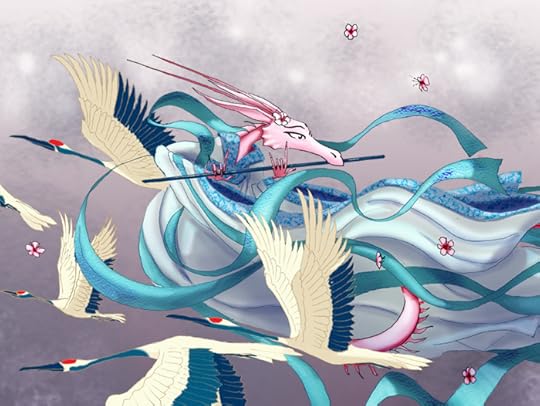
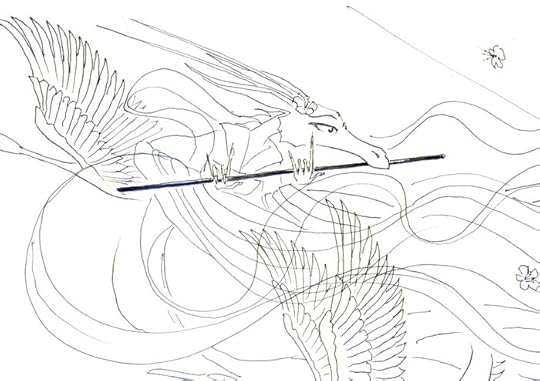
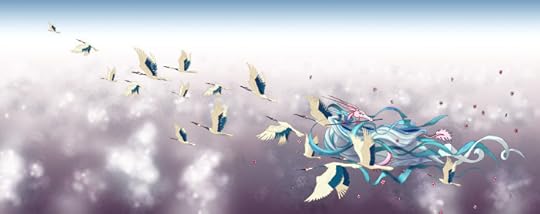
and Plum, with a Roman (no reason, just fancied drawing a Roman soldier)…

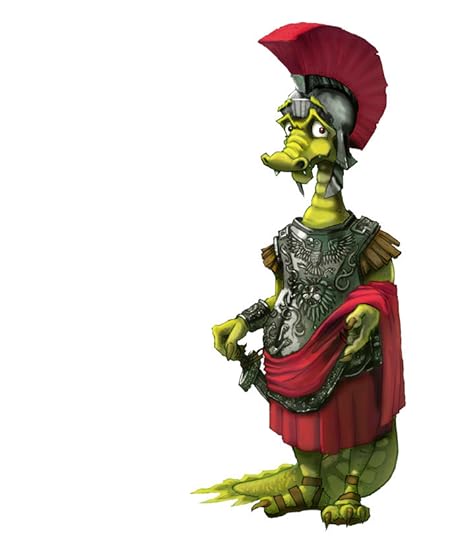
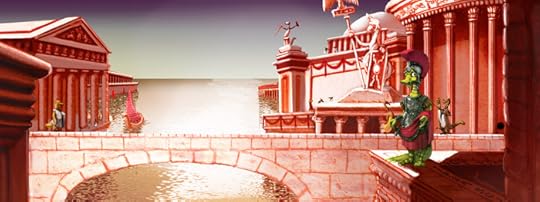
… and another in the Mayan Empire series (along with Dragon Fruit) is Red Hot Relish, because it’s got tomatoes in (tomatoes coming from the Americas)…

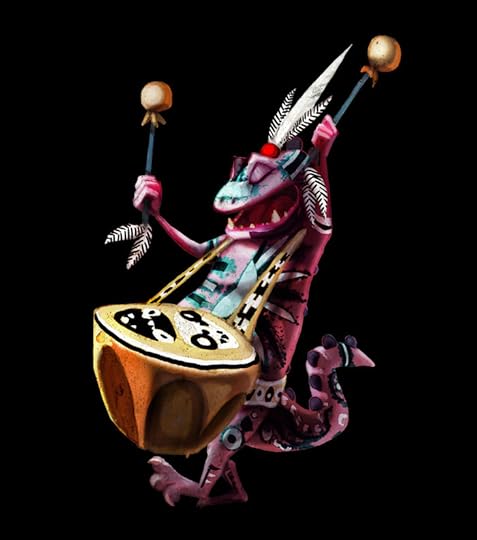
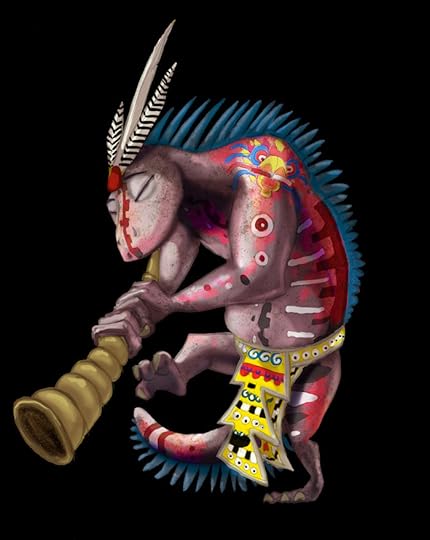
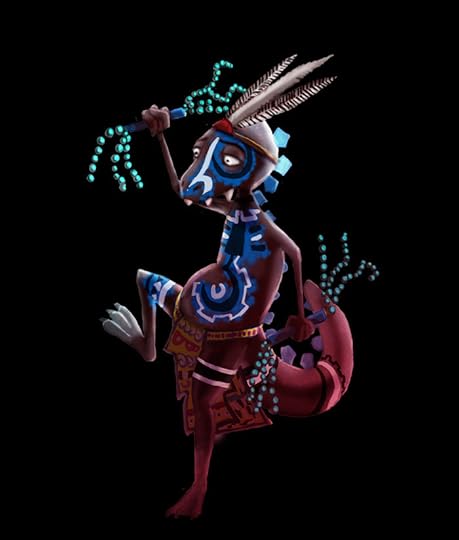

June 9, 2013
Dali Sketchbook: Yunnan Geology
Another page from the Dali sketchbook, the Age of the Dinosaurs!
And close ups:






